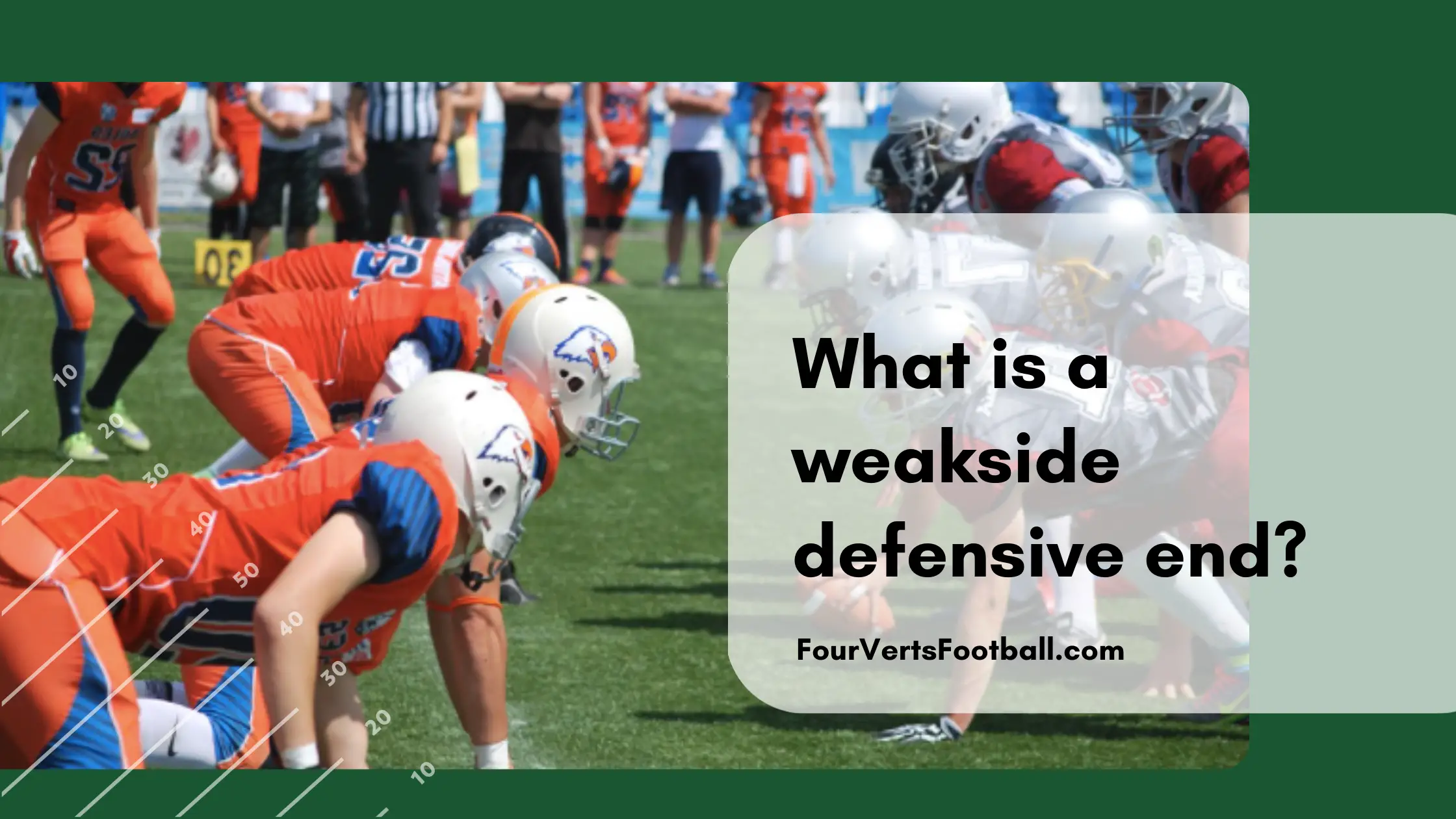The game of football has tons of different positions between offense, defense and special teams. One position many fans don’t know much about is the weakside defensive end.
A weakside defensive end is a defensive pass rusher that plays on the side of the formation with fewer offensive players. In general, this player tends to line up on the side of the formation that does not have a tight end.
For those that don’t know a defensive end is a defensive lineman that lines up on the outside of the defensive line. These players are typically used for rushing the passer though they have a role in the run defense as well.
The weakside portion of this position refers only to the formation of the offense. The strong side in football is the side of the formation that has more players and the weak side is the one with fewer.
The weakside defensive end is going to line up on the side of the formation with fewer players. This usually means they will be one on one against the offensive tackle.
In most cases, a weakside defensive end is going to play in a 4-3 formation. This means four defensive linemen and three linebackers.
Often times the weakside defensive end position is going to displayed with the acronym WDE.
Responsibilities Of A Weakside Defensive End
Now that you understand what this position is it’s time break down what they are responsible for on the field.
Premier Pass Rushing
The main responsibility of a weak side defensive end is pass rushing. Since these players line up on the weak side of the formation they are likely to face fewer blockers than the strongside defensive end.
Since the tight end usually lines up on the strong side this defensive end will not have to worry about being chip blocked.
Instead, this pass rusher will usually have a one on one matchup against the offensive tackle. This favourable matchup means the defense is expecting this player to get pressure on the quarterback.
For this reason, weakside defensive ends are primarily pass rushers. The most important traits of this position involve their ability to beat offensive linemen and get to the quarterback.
Contain The Cutbacks And Reverses
Though the weakside defensive end does not play a major role in run defense they still are involved in some plays.
Since these players line up on the weak side of the formation it is much less likely that the running plays will come in their direction. This is because the other side of the formation is going to have more players blocking for the running back.
For this reason, this position does not tend to value run stopping as much as a strongside defensive end.
Though on some occasions the weakside defensive end is going to be the difference between a big run and a stop for no gain.
When a play is run to the strong side the weakside defensive end has the responsibility of stopping a cutback. If the running back sees that there is no opening on the strong side they may cut backwards towards the weakside.
In this situation, the end should be ready and waiting to contain the runningback so that he cannot make his way back across the field.
This is also true for a reverse, this is a play in which the offense fakes a run in one direction only to flip it back to the other. The weakside end will be the one defensive lineman waiting to stop the ball carrier from coming back to his side of the field.
If this position pursues the running back too aggressively on a run they may find they have failed to hold their position of containing the running back to one side of the field.
Batting Down Passes
Though not a major role in the weakside defensive ends position they can also play a role in batting down passes.
On a pass rush attempt, the defensive end may find that he is not going to make it to the quarterback before the throw is made.
In this situation, the end should look to read the quarterbacks eyes to determine where he is going to throw. When the quarterback begins to throw the ball the end will jump up with his hands in the air in an attempt to knock it down.
Plays in which a defensive lineman bats down the ball happen several times a game. And on some occasions, these tipped balls can result in interceptions for the defense.

